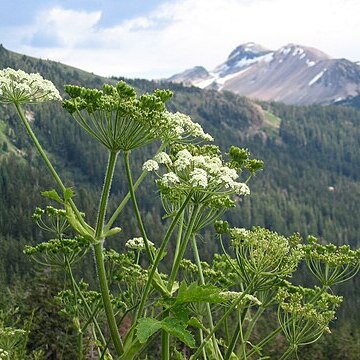A herb. It has a stout leafy stem. It can be 2 m tall. The stems are hollow. The leaves are compound with 3 leaflets. They are 30 cm wide. The flowers are small and white. They have a sweet scent. They are in large compounds groups on equal length stalks. The fruit are dry and like nuts.
